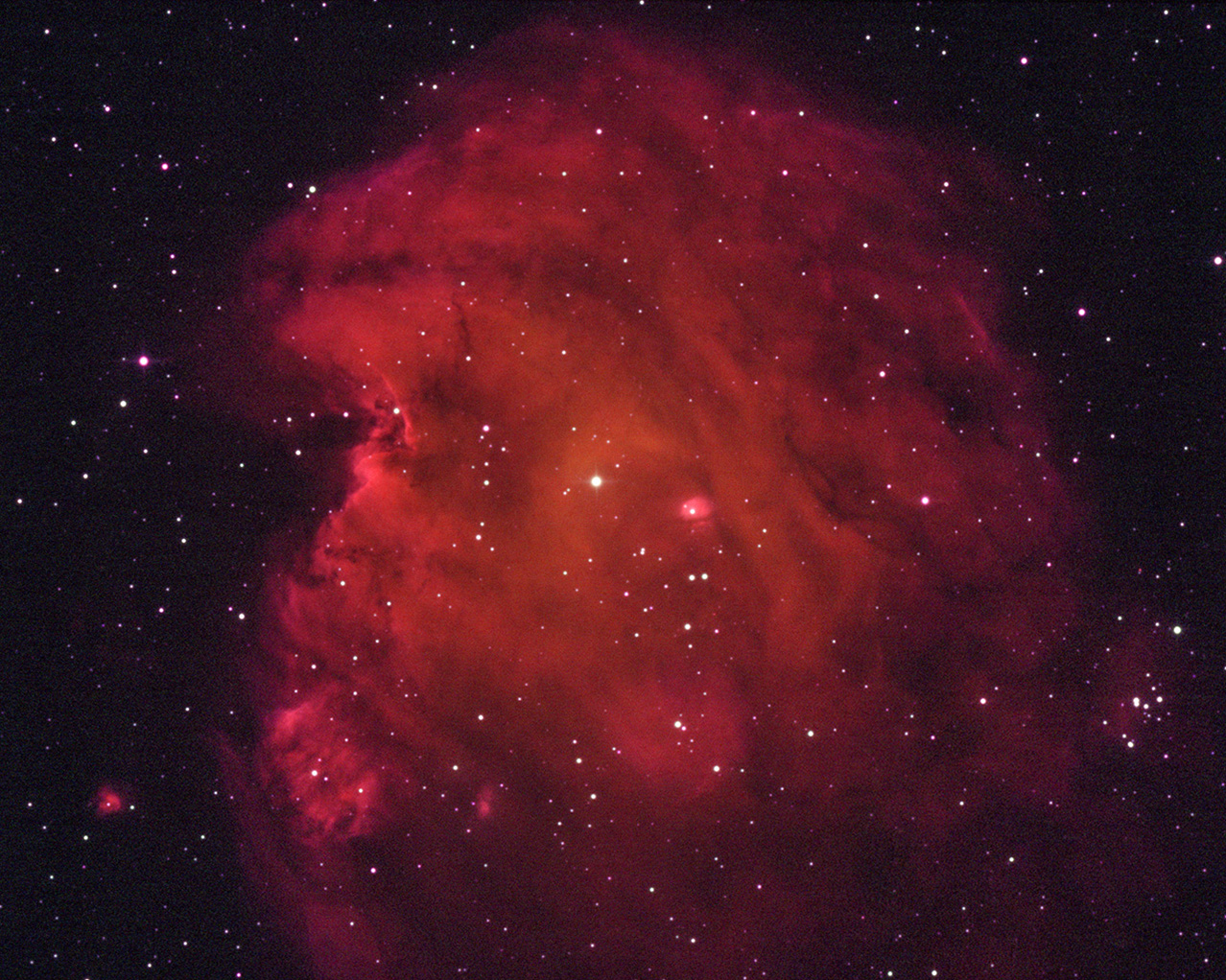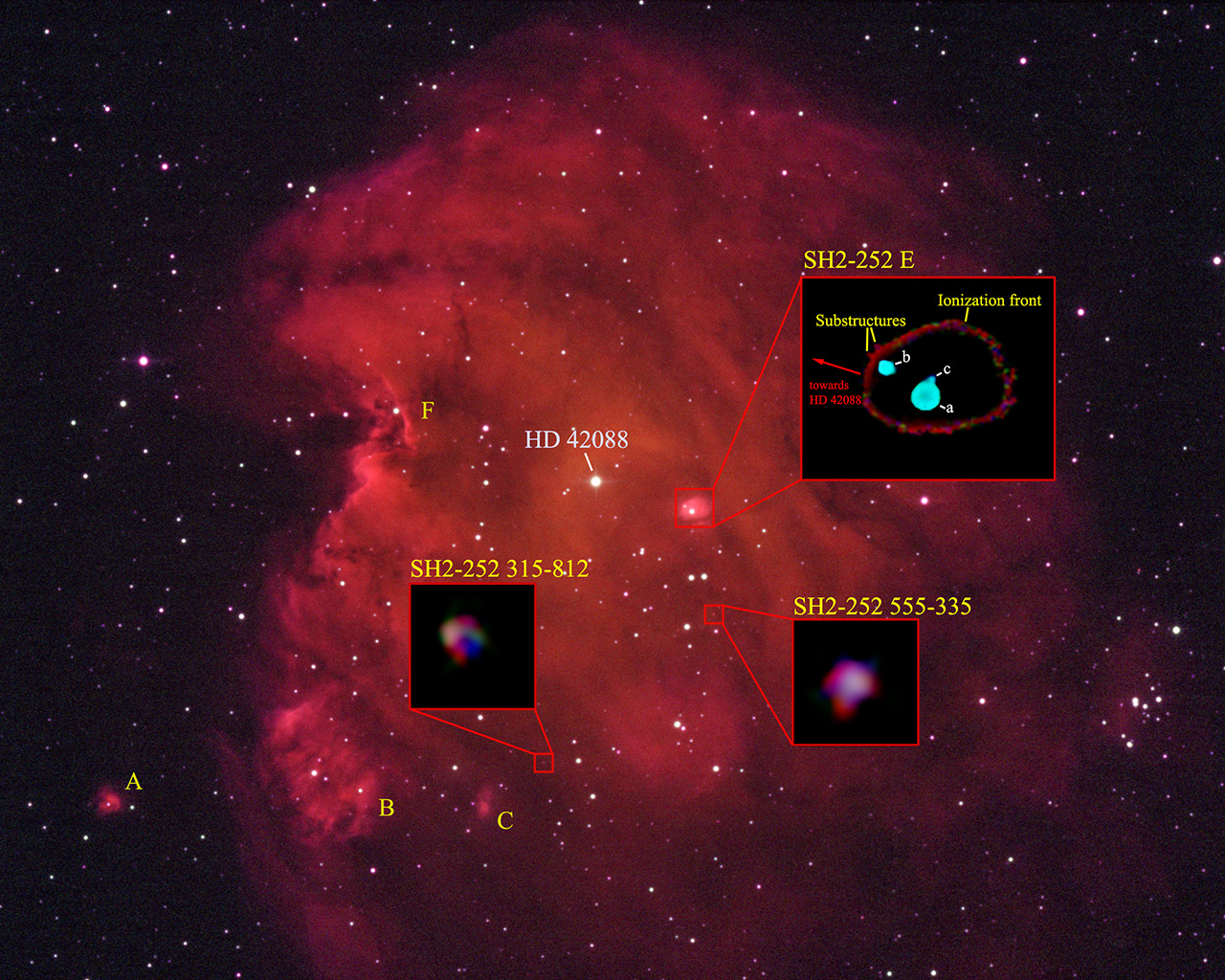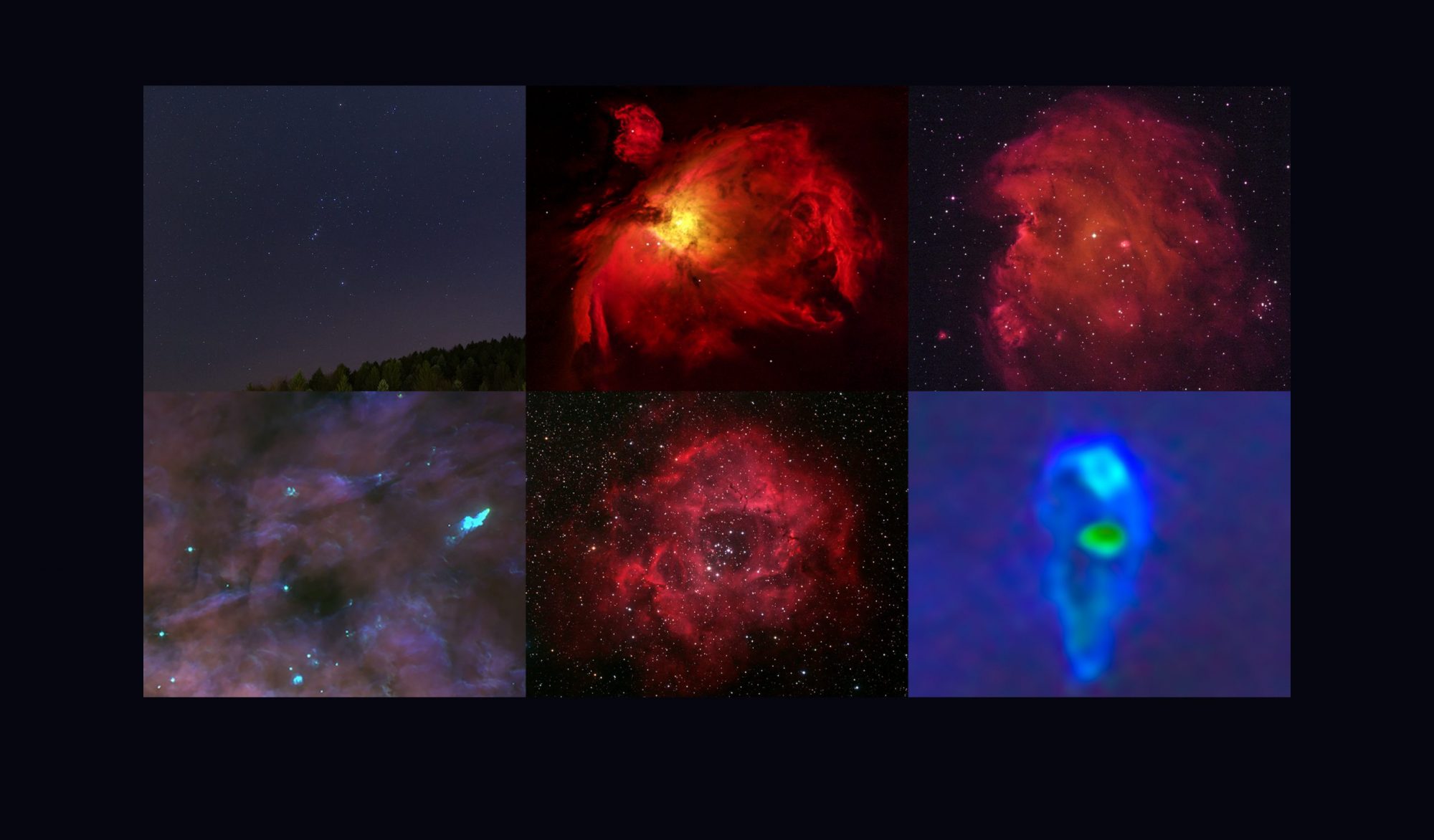

The Monkey Head Nebula (SH2-252) in Narrow-band observations (Planewave 17in CDK, FLI-PL6303E). RGB picture of 197 stacked 60 second exposures in Halpha, OIII and SII Narrow-band filters.
The Monkey Head Nebula (SH2-252 in the Sharpless catalog, NGC 2174) is another, extended emission nebula in the constellation of Orion. In difference to the Orion Nebula or the Horsehead Nebula this region is not located inside the Orion Giant Molecular Cloud A (GMC A) or the Giant Molecular Cloud B (GMC B) but has an approximately five times larger distance from earth. As in the case of the Orion Nebula the intense radiation from a young, massive O-type star (HD 42088) is ionizing the surrounding gas which results in the red color of the cloud. Inside the extended emission region several bright, compact spots (A, B, C, E and F) can be identified. These spots are associated with young B-type like stars which form compact HII regions.
Emission nebula like the Monkey Head Nebula emit most of the visible light in well-defined emission lines. They are therefore ideal targets for Narrow-band observations. In Narrow-band observations special filters are used which only transmit the light of a single spectral line. Pictures made with a Narrow-band filter are black and white pictures. To get a color (RGB) picture, one has to combine three pictures made with different filters. The above color picture was made with three Narrow-band filters for the Halpha (red), OIII (green) and SII (blue) emission lines using a remote telescope (T21) from the iTelescope network in New Mexico/USA.
In the bright SH2-252 E emission region three stars can be identified: SH2-252a, SH2-252b and SH2-252c. SH2-252a is an early B-type star which is the main source for the ionizing radiation in the compact HII region. SH2-252c is a very young, lower mass star. SH2-252b is a young A-type like star. Spectroscopic observations show that this young A-type star has a disk which is formed by gas and dust particles. This system shows some similarities to the proplyds in Orion: a young star with a disk and a nearby O-type star. Is it possible that SH2-252b has a neutral, photoevaporating flow like the Orion proplyds? Compared to the Orion proplyds the projected distance to the O-type star (HD 42088) is considerably larger. Also, an A-type star has a higher mass compared to the central stars in the Orion proplyds. A neutral, photoevaporating flow would therefore only be possible if the disk around SH2-252b would be much larger compared to the disks in the Orion proplyds. There is an ionization front close to SH2-252b which is pointing towards HD 42088. The ionization front also shows two horn like substructures. This ionization front seems however to be due to radiation from the B-type star SH2-252a. The substructures are at the resolution limit of the picture and it is not clear if these structures are real or are artifacts due to noise effects. In summary there is no direct observational evidence for a neutral, photoevaporating flow from SH2-252b.
The two objects SH2-252 555-335 and SH2-252 315-812 (the naming is based on the coordinates in right ascension and declination) also show some similarities with the proplyds observed in the Orion Nebula. The objects have a red color indicating Halpha emission from an ionization front. Inside the ionized region a star (white/blue color) can be identified. It seems however unlikely that the ionization front is due to a photoevaporative flow from a disk around the young star because there is no O-type or B-type star close by which is required to initiate such a neutral flow. Instead it seems more likely that SH2-252 555-335 and SH2-252 315-812 are classical Herbig-Haro objects. This means jets/outflows from a young star/disk system interact with their environment and form an ionized region close to the star.
